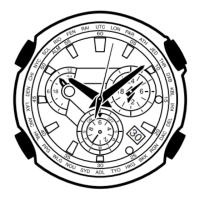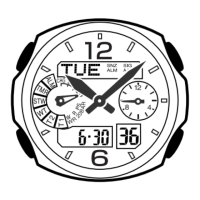What to do if Casio 5061 hands suddenly stop moving?
- VVincent PhillipsSep 4, 2025
If the hands on your Casio Watch suddenly stop moving and the buttons are disabled, the watch may be in power recovery mode. Do not operate the watch and wait approximately 15 minutes until the hands return to their normal positions. To help the power recover, leave the watch exposed to light.







